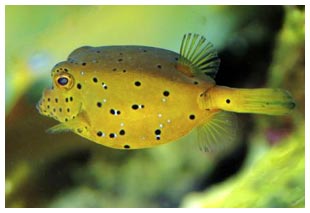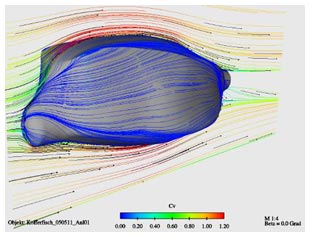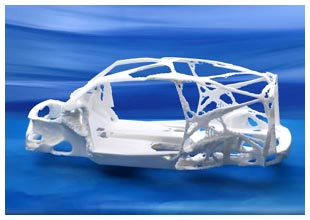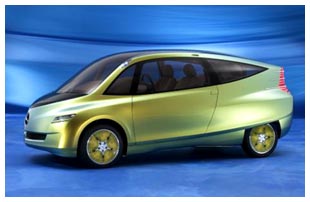Biomimetics isn’t really a topic I cover here, however two other areas seem to be increasingly tied to it. The first is the RepRap project. That makes sense to me since creating objects free from manufacturing constraints allows forms and solutions more like those in nature. Hard to beat Mother Nature. I’ve always been fascinated with the internal structure of bird bones for example – they’re strong and beautiful at the same time.
The other area is industrial design. As the 3D tools used within the profession become both more powerful and increasingly user-friendly, it’s only natural that forms will become more expressive and draw from a larger pool of inspiration. Mother Nature has a big pool and is pretty inspiring.
That said, I came across a short Yahoo photo blurb earlier this evening about Mercedes’ new concept vehicle – the DCX. Okay. Pretty funky. But not enough information for me to get really interested and bookmark the link. So leave it to WorldChanging to put some meat on the story’s bones in their write up. First, they have a more informative story on the vehicle. Second, they discuss the development of the vehicle (gotta love that). And third, they have some great links, including one to the Mercedes presskit. Awesome. And from that kit I grabbed the following images:




The top image I have to post. Even a fish deserves his/her 15 minutes of fame and being the inspiration for this vehicle qualifies in my book (we could use more fish in place of some characters in the news lately, imo). The second image is near and dear to my aerospace engineering heart. The third image got my attention because it both reminds me of those bird bones I mentioned above, and because it looks like an RP model. And the fourth image needs no explanation.
Now go read the article over on WorldChanging. But take that comment regarding the shape/coefficient with a grain of salt… a big reason for high drag coefficients are the seemingly minor things: non-flush surfaces, antennas, side mirrors, aso. I don’t see alot of that on this concept. All other things being equal, a flattened wedge does have a better coefficent (profile drag is the largest component of the overall equation). However, if you go sticking a bunch of aerials on that wedge and have mismatched surfaces all over and…. well, you get the point.
